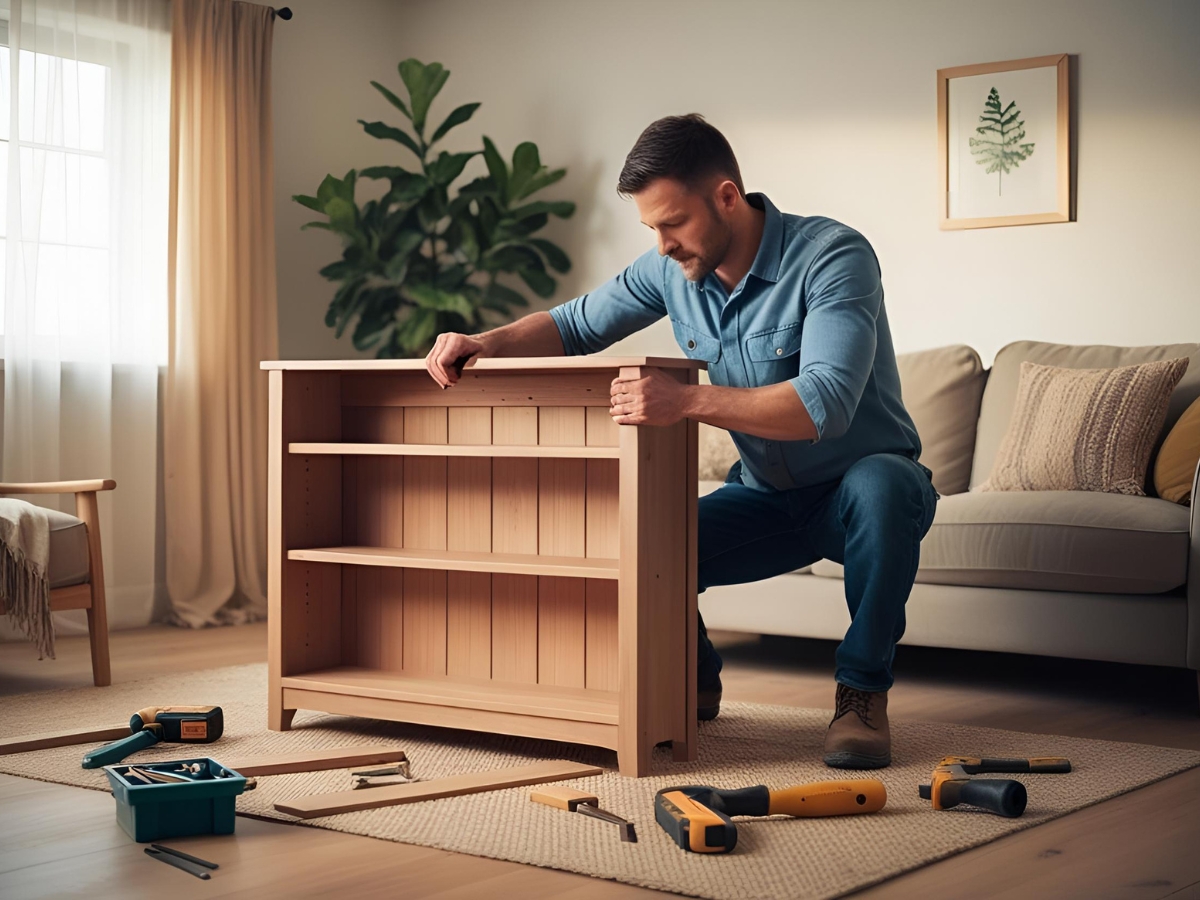You’ve just moved into a new space or finally bought that long-awaited furniture piece, maybe it’s a sleek bookshelf, a new dining set, or that “easy-to-assemble” chair. The excitement is real, but as soon as you open the box and stare down a sea of screws, planks, and a manual that feels more like a puzzle than a plan, the mood shifts. It’s easy to assume furniture assembly is a piece of cake until that “simple” unit turns into a three-hour guessing game. To avoid these issues, here’s a simple, no-stress guide that makes assembly feel less like a chore and more like a win.
Furniture Assembly Tips from the Professionals
Before you dive headfirst into your next furniture installation project, go through these tried-and-true tips that will save you from mid-build frustration, crooked results, or that dreaded moment when you realize something’s on backwards:
1. Unbox and Inventory Everything First
Start by opening the box gently. No stabbing it with scissors, as this way, you might accidentally damage a panel or lose a crucial bolt in the process. Once everything’s out, spread the parts across the floor or a clean table. Now, grab the instruction manual and match what you see in real life with what’s on the list.
Count every screw, every wooden dowel, every panel, even the weird little plastic pieces you’re not sure about yet. It might feel tedious, but trust us: finding out you’re missing a key part after you've half-built the thing is peak frustration. Doing this upfront means no mid-assembly surprises, no frantic Google searches for replacement parts, and no tossing the whole thing aside in defeat.
2. Read the Instructions Carefully
Once you’ve confirmed all the pieces are there and nothing is missing, take a moment to review the instructions thoroughly before you start. Getting familiar with the steps upfront helps you anticipate what tools you’ll need, identify tricky parts, and know when it’s a good idea to call in some extra help.
Pro Tip: Watch online videos if available. Visual learners often find a quick walkthrough video more intuitive than printed diagrams.
3. Gather All Your Tools
Based on the instructions, gathering the right tools before you start can make the whole assembly process much smoother and less frustrating. You probably won’t need every tool on the list, but here are some basics that come in handy for most furniture projects:
- Allen key (or hex key)
- Powered screwdriver or cordless drill
- Rubber mallet
- Level
- Adjustable wrench
- Box cutter (for opening packages)
4. Find the Right Location for Assembly
Before you begin assembling your furniture, make sure it’s positioned exactly where it will stay. Putting a table together in the kitchen, only to realize it belongs in the dining room, means you’ll have to move the whole thing later.
5. Dry Fit Before Final Assembly
This step is a crucial part of the furniture assembly hacks and is often skipped. Do a quick dry fit! In this, you place pieces together without screws to see how everything aligns. It helps catch mismatched parts or incorrect orientations before things are permanently attached. Furniture that’s assembled backwards or with flipped panels often ends up needing to be completely redone. A dry fit saves hours and heartache.
Common Mistakes to Avoid When Assembling Furniture
Besides following these furniture assembly tips, even experienced DIYers can run into snags. Here are the most common mistakes to pay attention to:
1. Skipping Steps or Rushing Ahead
Many people think they can guess the next step, but one wrong assumption can throw off the whole build. Stick to the sequence in the instructions. Missing even one washer or mixing up panel orientations can mean backtracking.
2. Misusing Tools
Using a power drill without a torque setting can destroy soft furniture materials. Likewise, using a hammer instead of a rubber mallet can dent or chip delicate pieces. Stick to gentle tools and avoid the temptation to “force” anything into place.
3. Overtighten Screws
It might seem like "tighter is better," but not in furniture assembly. Over-tightening can strip screw holes, crack particle board, or misalign components. Always tighten screws just enough to secure the piece, then adjust once everything is in place.
4. Damaging Pre-Made Holes
Those factory-made holes are meant to guide the hardware, so don’t force anything. If something’s tight or needs tapping into place, use a rubber mallet instead of a hammer to prevent cracking or widening the holes.
5. Ignoring Surface Protection
It's easy to get caught up in the excitement of assembling your new furniture, but forgetting to protect your floors can result in scratches, dents, or carpet snags. Always work on a soft, clean surface like a rug, blanket, or cardboard sheet to avoid damaging your furniture and flooring while maneuvering parts.
Choose HAUL PROS – Experts You Can Count On
The furniture installation task doesn’t have to be a stress-filled chore. Putting it together with a little planning and the right tools can be straightforward, but let’s face it, not everyone has the time (or patience) to wrestle with confusing instructions and piles of parts. That’s where HAUL PROS professionals come in. We offer reliable furniture assembly services in Orange County, Los Angeles, and the Inland Empire, where our professionals bring extensive experience assembling all types of furniture.



